Ganvié was built by the Tofinus between the sixteenth and seventeenth centuries in the unhealthy northern lagoons of Nokwé, the lake located about twenty kilometers from Cotonou, the capital of Benin. They built it to escape the attacks of the slave hunters Fon, who still live on the mainland. In the language of the Tofinu, Ganvié means “the community of the saved”; where “gan” stands for “we are safe” while “vie” means “community”.
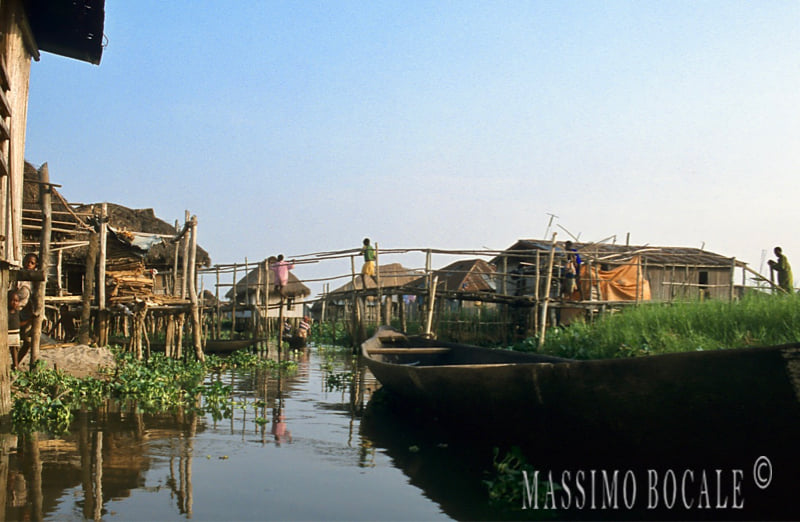
These impregnable swamps also halted the invasion of European colonists in the 19th century while preserving the original social, family and religious organization.
Cotonou is the ideal starting point to reach the village of Abomey Calavi. Here with a motor boat we cross the large lagoon and reach in about half an hour the village of Ganvié.During the navigation we pass boats of all types and sizes: canoes that go both sailing and rowing, boats that carry goods or stationary to fish.
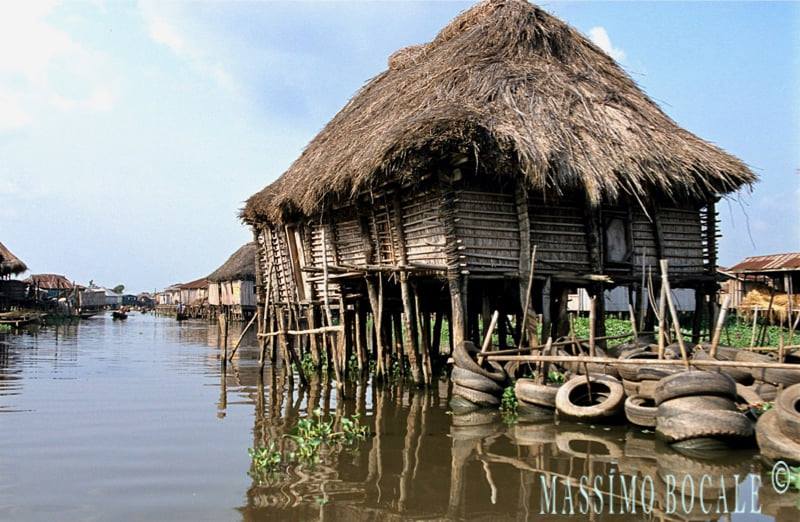
We enter the lake village along the “Canal of Love” which is the busiest waterway and we reach the “square”.
Ganvié is the largest pile-dwelling village in the lagoon. Here everything rests on poles of teak tree, a rot-proof wood: from simple homes to spartan hotels, from the tiny hospital to the rare pedestrian walkways.
The life of this people is all focused on water: everyone, including children, has a pirogue that uses to move from one area of the village to another. The sail, sometimes formed by patched sheets, is hoisted to face the long movements inside the lagoon.
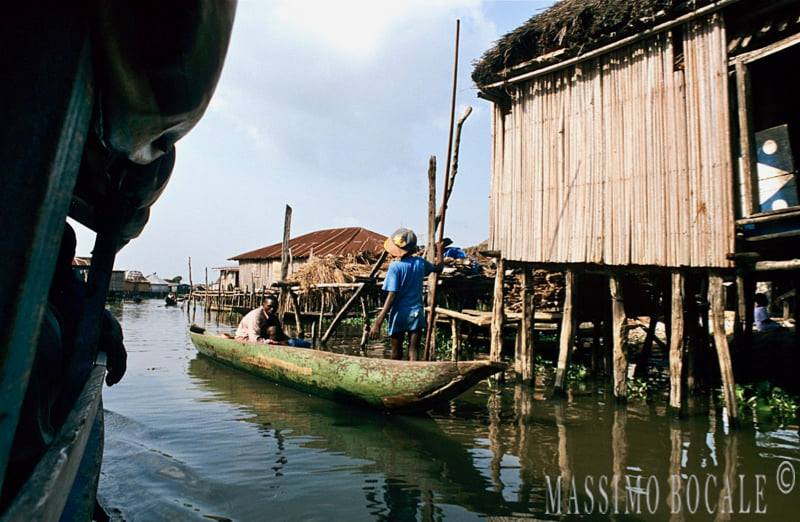
All public activities take place in the water including the market, which is held in the large “square”. There are pirogues-stalls and a great deal of buyers moving around in the boat.
The numerous children are everywhere ready to dive or paddle on those tiny canoe: at the age of two they know how to paddle and five are able to fish.
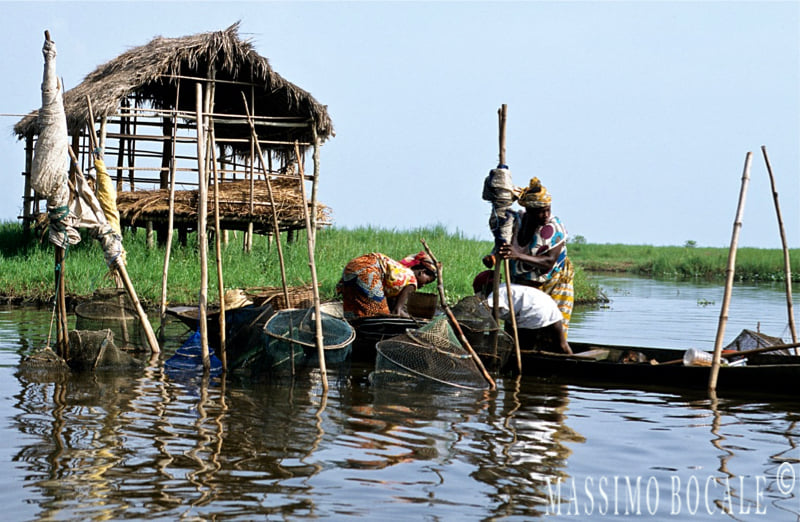
The main activity of the Tofinu is obviously fishing. The net is launched in such a way that it falls on the water like an umbrella, others instead use ancient techniques such as acadja, an ingenious fishing system still very used today. On the sandy bottom are planted circular fences formed by bamboo and straw poles where the fish will find a safe shelter to grow and reproduce. After about three months the fisherman will finally drop the net.
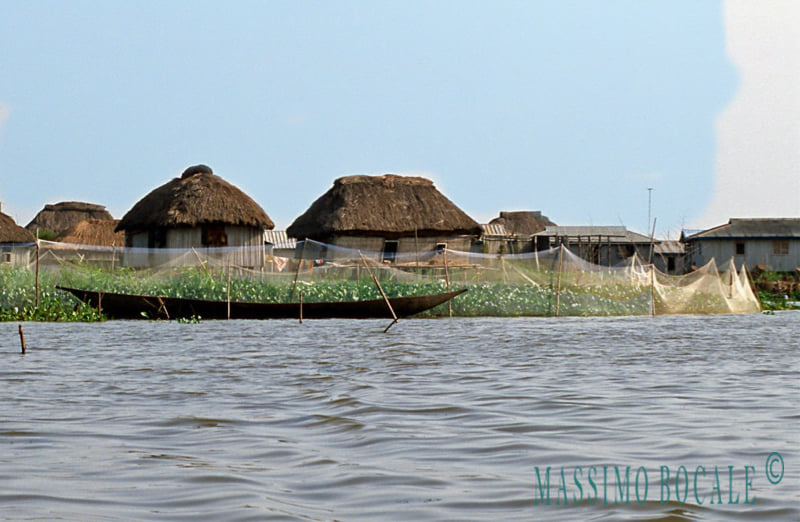
The Tofinu barter in the mainland markets their products (fish and fish oil) with fuel, vegetables, fruits.
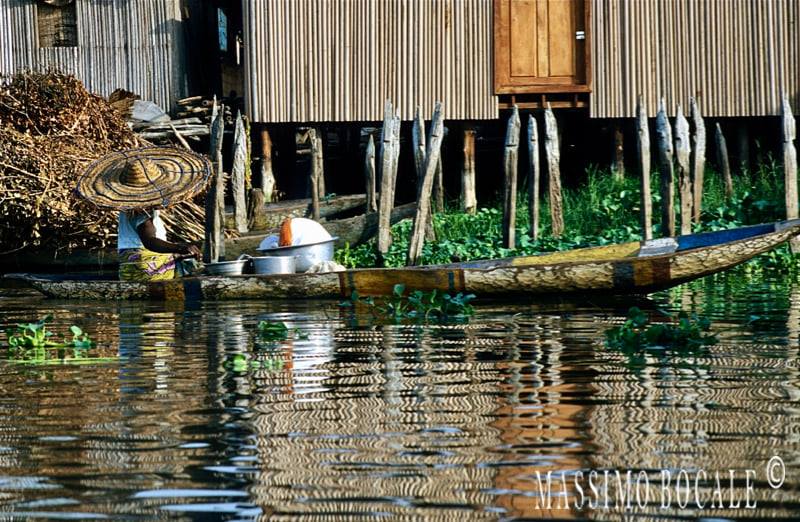
We stop for the night at the Spartan Hotel Chez M. From the window of our pile-dwelling room we observe one last small group of very lively children still playing in the water.With the arrival of darkness the fairy silence of the night is sometimes interrupted by the rhythmic rustle of the paddles on the water.




